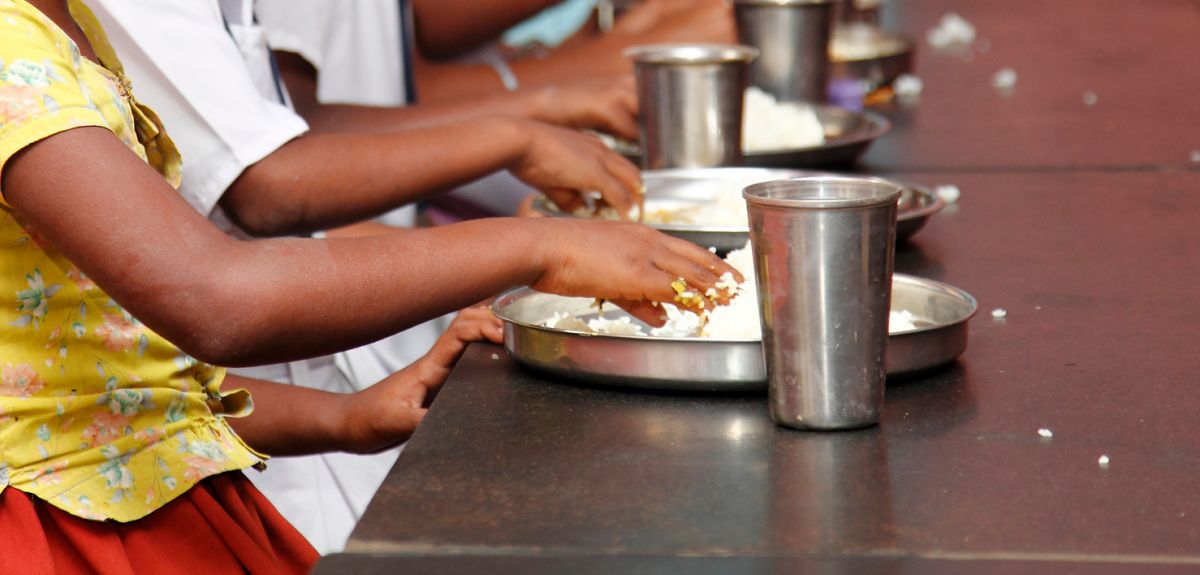
Wasting of Indian children in the recession 'linked to food price spikes'
A study co-authored by Oxford researchers says spikes in food prices during the last global recession can be linked with the increase in malnutrition among children in the Indian state of Andhra Pradesh in 2009.
The researchers examined the proportion of children who experienced 'wasting', a widely used measure of malnutrition that shows a child has a lower than expected weight given their height (based on World Health Organization standards). They observed progress in child nutrition between 2002 and 2006 when the proportion of wasted children in Andhra Pradesh fell slightly from 19% to 18%. However, this improvement had reversed by 2009 when 28% of children were wasted – an increase of 10 percentage points compared with 2006. This was after high inflation in food prices in the district, beginning in 2007 and continuing through 2009. The research paper is published in the online version of the Journal of Nutrition.
The study was conducted by researchers from the Public Health Foundation of India and the Department of Sociology at University of Oxford, with a team from Stanford University and the London School of Hygiene and Tropical Medicine. They focused on the effect of food prices on child nutrition in Andhra Pradesh, one of India’s largest states, using data from the Young Lives study of child poverty.
The research team combined children’s weight and height measurements from the Young Lives data with government data on household level expenditure on and consumption patterns of food from the Indian National Sample Survey Office and the National Nutrition Monitoring Bureau in order to calculate how much children ate across food categories. The researchers found that children’s food consumption dropped significantly between 2006 and 2009 as food prices increased. There were corresponding increases in wasting among children from poor and middle-income households, but not high-income households between 2006 and 2009. The paper suggests this supports the theory that poorer households have the smallest food reserves and are therefore hardest hit by rising food prices.
The researchers examined interview data from each household’s report of their food expenditures over the past 15 days. Householders reported the amount bought in kilogrammes and the price per kilogramme. The data were analysed in both 2006 and 2009 across eight food categories (rice, wheat, legumes, meat, fish, eggs, milk, fruit and vegetables). To examine the rise in food prices, the researchers used monthly price records collected by the Government of India.
Lead author of the study Dr Sukumar Vellakkal, a researcher at the Public Health Foundation of India, said: 'Our findings suggest that poorer households face the greatest risk of malnutrition, in spite of the Public Distribution System, which provides subsidised food to a large proportion of the population. Better targeting of food security policies may be necessary to meet the needs of India’s most vulnerable households.'
Study co-author Dr Jasmine Fledderjohann, of the University of Oxford, said: 'Our findings show a sharp increase in wasting associated with food price spikes. It is possible that this rise would have been even greater without governmental programmes like the Public Distribution Scheme or the Midday Meal Scheme, which provides free meals to school children. It’s important to recognise that households may try a number of strategies to cope with rising food prices, such as going without, or switching to low-cost alternatives. More detailed research is needed in this area.'
Senior author Professor David Stuckler of Oxford University said: ''The implications of this study are that the massive spike in food prices, which is linked to speculative betting by banks, has severe consequences for nutrition across the globe.'
 Lord Hague of Richmond elected as new Chancellor of Oxford University
Lord Hague of Richmond elected as new Chancellor of Oxford University
 Sheldonian Series launches with an energetic and open exchange of views on 'Democracy'
Sheldonian Series launches with an energetic and open exchange of views on 'Democracy'
 New study reveals the explosive secret of the squirting cucumber
New study reveals the explosive secret of the squirting cucumber
 Ethiopian wolves reported to feed on nectar for the first time
Ethiopian wolves reported to feed on nectar for the first time
 Professor Anthony Harnden appointed as the new Chair of the MHRA
Professor Anthony Harnden appointed as the new Chair of the MHRA